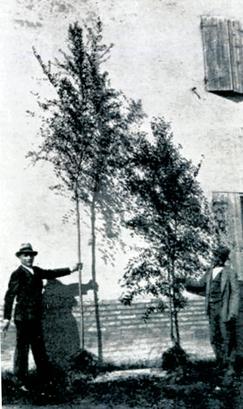| Ulmus pumila 'Ansaloni' | |
|---|---|
 Arturo Ansaloni (left) holding an 'Ansaloni', Bologna, circa 1933. | |
| Species | Ulmus pumila |
| Cultivar | 'Ansaloni' |
| Origin | Italy |
The Siberian elm cultivar Ulmus pumila 'Ansaloni' was raised by the Ansaloni Nurseries , Bologna, c. 1933, from a tree introduced from the Far East in 1930. [1]